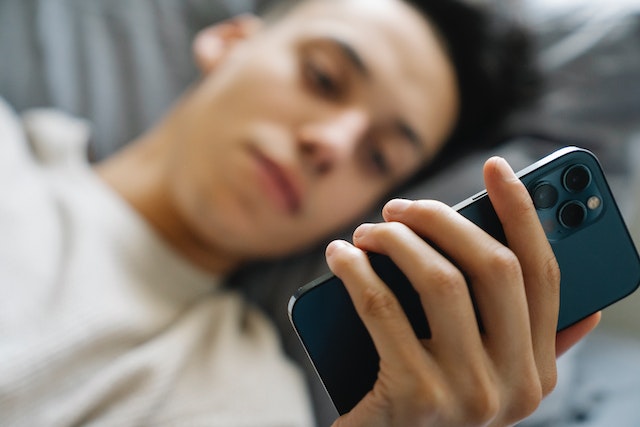Overuse is often defined as a “dependence syndrome”, which is the term used by the World Health Organization (WHO Expert Committee, 1964) to replace addiction or habituation. This can be categorized either as substance abuse, such as from psychoactive drugs, alcohol and tobacco under ICD-10 (International Statistical Classification of Diseases and Related Health Problems), or a behavioral addiction, such as a mobile phone addiction.
A research carried out by Sanjeev and Anuradha Davey (Department of Community Medicine, Subharti Medical College, India; 2014) on Assessment of Smartphone Addiction in Indian Adolescents for which a total of 45 articles were considered in systematic-review from the whole world; later on 6 studies out of these 45 related to Smartphone’s addiction in India were extracted to perform meta-analysis, in which a total of 1304 participants (range: 165-335) were enrolled. The Smartphone addiction magnitude in India was then found to range from 39% to 44% as per fixed effects calculated (P < 0.0001). Such reports are terrifying.
Some of the symptoms or signs that indicate phone addiction are as follows.
Nomophobia
This is a proposed term for the irrational fear of being without a cell phone or being unable to use it for any reason.
Failed Control-Attempt
This is seen when the phone user makes attempt to restrict usage but can’t keep to the restrictions, even when there are no physical emergencies. The user just gets this chronic impulse to check the phone.
Preoccupation
This is a very common sign, as it involves the user always picking the phone at almost every free or waiting time.
Time unconsciousness
This is when the user spends unintended time with the phone.
Insomnia
This is a sleep disorder that is also known as sleeplessness. This is because Melatonin, which is the wake-sleep cycle manager in the human body has been altered by frequent interruptions from extensive phone usage at night especially.
Relational Deficiency
This is another sign that is not quickly noticed. Phone Addicts in this case, prefers communication via phone and don’t like relating with people physically even relatives and friends. This leads to withdrawal and worse when network or power is out on the phone. They tend to be depressed, angry, restless, irritated and tensed.
The way out of phone addiction
Below are well researched solutions that will help in getting un-addicted to phone.
Disable Apps’ Notifications
This is one of the best ways to gradually curb phone addiction. Disabling the notifications from social network Apps and other related Apps will reduce the attention trigger, as a lot will be unconsciously missed.
Make the phone color Grayscale
This involves changing the color scheme of your phone to gray, thereby making the phone less-attractive and boring. This will surely reduce interest.
Take phone out of bed at night before sleeping
This practice will make the phone at worst, the second thing to handle on waking up, which will drop off the chart of preference gradually.
Use smart speakers
Using smart speakers or apps that let you interact with the phone via voice command. This will take your fingers and eyes off the phone at most times and healthier.
Get a friend to help
This is a very efficient way to go about stopping phone addiction. Sincerely explain to an old or new friend if no one existed. Let the friend hold your phone for you sometimes and tell your friend not to chat you up online but always visits and if possible, play games together. This will build your relationship with people dramatically.
Schedule and Budget
This is the most difficult but fastest way to get un-addicted to phone. Make out off-times and alarms that indicate phone usage. For those that are obsessed with getting the latest phones at all cost. Making a strict budget for phones and subscriptions, this will sure do a great deal.
In conclusion, addiction is mostly mistaken for freedom. With the symptoms and solutions presented above, one will know a great deal of where to make the boundary, in terms of phone usage and addiction. “Being free is being in control.”
Photo by Eren Li
 Jairon Landa
Jairon Landa 
 How Artificial Intelligence (A.I) Changes Our Daily Life
How Artificial Intelligence (A.I) Changes Our Daily Life